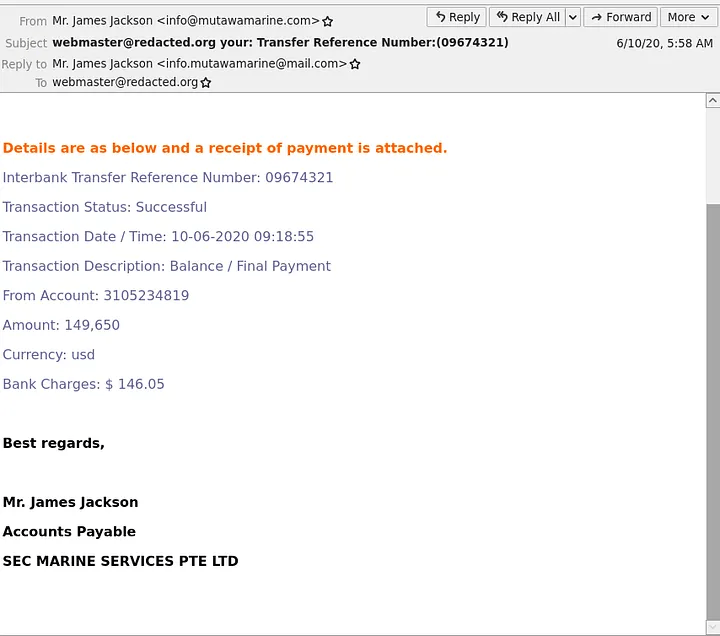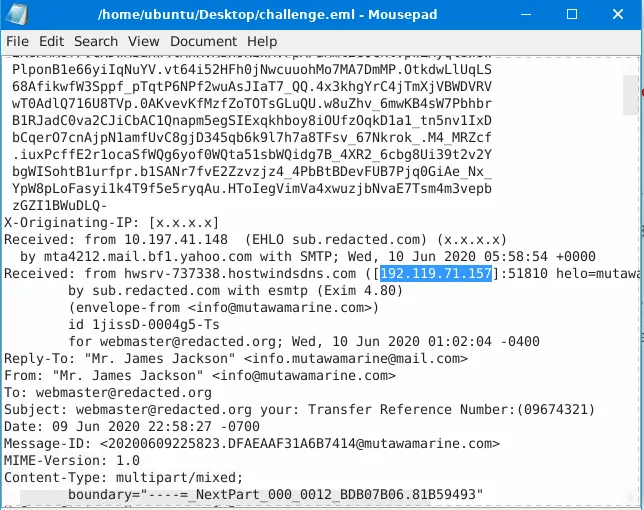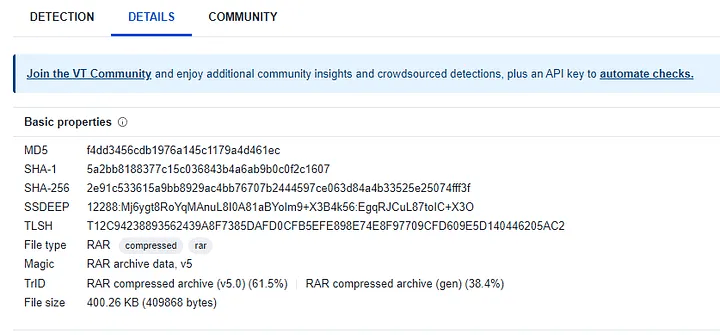📝 Case Study: The Greenholt Phish
🔹 Overview
In this case study, I investigated a suspicious email received by a sales executive.
The executive was not expecting this email, which mentioned a money transfer and contained an unexpected attachment. This scenario simulated a phishing attempt.
Skills demonstrated:
- Email header analysis
- Extraction of Indicators of Compromise (IOCs)
- File hash and metadata analysis
- DNS, SPF, and DMARC verification
- Attachment inspection and threat validation
🔍 Key Activities & Highlights
1. Email Timestamp
- Opened the email using Thunderbird: thunderbird challenge.eml
- Checked the date posted at the top of the email header.
Findings:
- Timestamp:
06/10/2020 05:58


2. Email Sender
- Viewed the “From” header in the email.
Findings:
- Name:
Mr. James Jackson - Email address:
info@mutawamarine.com
3. Reply-To Address
- Checked the “Reply-To” header in the email.
Findings:
- Reply-To:
info.mutawamarine@mail.com
4. Originating IP
- Opened the
.emlfile and examined the headers for the originating IP.
Findings:
- IP:
192.119.71.157 - Owner:
HostWinds LLC

5. SPF & DMARC Records
- Used MXToolbox to analyze the Return-Path domain.
Findings:
- SPF:
v=spf1 include:spf.protection.outlook.com -all - DMARC:
v=DMARC1; p=quarantine; fo=1

6. Attachment Analysis
- Found the attachment in the
.emlfile. - Saved the attachment and ran a SHA256 hash check:
sha256sum SWT_#09674321__PDF.CAB
Findings:
-
Name:
SWT_#09674321____PDF__.CAB
-
SHA256:
2e91c533615a9bb8929ac4bb76707b2444597ce063d84a4b33525e25074fff3f
-
File size:
400.26 KB
-
Actual file extension:
RAR
✅ Conclusion
- Email originated from a suspicious IP and domain.
- Header analysis revealed mismatched Return-Path and Reply-To addresses.
- Attachment was potentially malicious, confirmed by SHA256 hash and file inspection.
- SPF and DMARC checks helped validate email authentication and origin.
Lessons Learned:
- Always inspect email headers carefully to detect anomalies.
- Use MXToolbox, Thunderbird, VirusTotal, and other tools to validate suspicious emails and attachments.
- Extracting IOCs from phishing emails is essential to prevent credential theft or malware infection.
- Bookmark trusted phishing analysis tools to streamline future investigations.
🔗 Navigation
- Back to Phishing Home